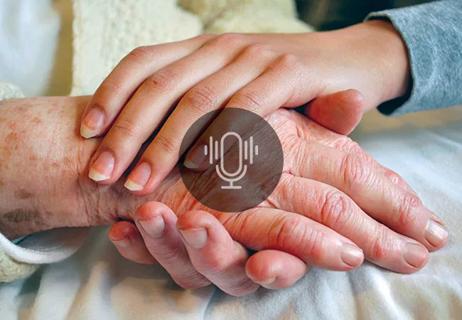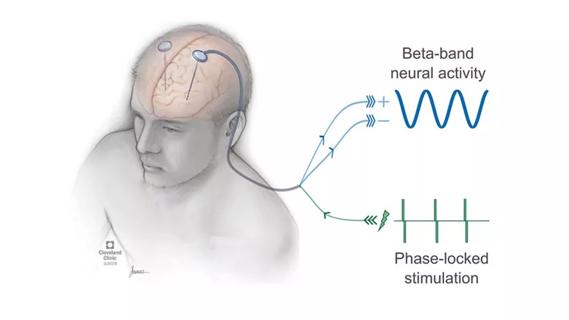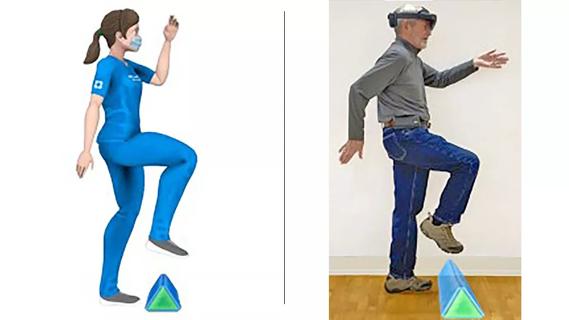Study aims to inform an enhanced approach to exercise as medicine

A $3 million National Institutes of Health award is supporting Cleveland Clinic researchers in advancing their investigations into the use of aerobic exercise to slow the progression of symptoms in people with Parkinson’s disease (PD).
Advertisement
Cleveland Clinic is a non-profit academic medical center. Advertising on our site helps support our mission. We do not endorse non-Cleveland Clinic products or services. Policy
The new five-year trial – The Interplay Between Genetics and Aerobic Exercise to Slow Parkinson’s Disease (GEARS) – is led by Jay Alberts, PhD, the Edward F. and Barbara A. Bell Family Endowed Chair, Staff, Biomedical Engineering, and Vice Chair of Innovation in the Neurological Institute.
GEARS will build upon Dr. Alberts’s previous research into the disease-modifying effects of aerobic exercise on the progression of PD symptoms.
The trial will investigate whether:
In the absence of pharmacologic or surgical approaches to slow PD, clinicians frequently recommend a high-intensity exercise regimen with the aim of improving motor symptoms and slowing progression.
“We have completed in-lab and in-home studies that show exercise to be effective in improving symptoms and slowing progression,” says Dr. Alberts. “What we’re looking at now is how to take an effective intervention outside the walls of Cleveland Clinic and even our seven-county area and determine whether community-based exercise programs can be as effective.”
In addition, adds Dr. Alberts, if exercise is to be considered medicine, more information is needed about an individual’s likelihood of responding. “All participants’ genetic data will be used to help us understand whether there are certain genes or combinations of genes that make an individual more or less likely to respond to an exercise intervention. That information will eventually lead to patient-specific exercise recommendations."
Advertisement
A total of 200 individuals with PD are being enrolled in stationary-bike pedaling programs at six community-based exercise locations in Northeast Ohio and through the University of Utah and Intermountain Healthcare in Salt Lake City. Participants exercise at 60% to 80% of heart rate reserve and strive to pedal at 75 RPMs. They will exercise three times a week for 12 months.
Control-group data will be gleaned from 125 individuals who were part of a recently completed NIH-funded trial that investigated home-based exercise for PD. The same variables are measured in both studies. Using the historic control-group data is a novel study design, Dr. Alberts says.
“It’s less expensive and we don't have to recruit control subjects,” he says. “That can be especially difficult in this type of clinical trial as patients know that exercise can be beneficial. This design allows us to obviate that logistical hurdle without compromising the scientific integrity.”
Every cycling program participant will wear a watch that monitors all their physical activity and heart rate. During exercise sessions, the watch will be connected to a cadence meter on the bike. Researchers will be able to download the data and work with patients to ensure they’re reaching the intensity levels needed to yield the best possible outcomes.
The genetic data analysis, performed in the lab of Ignacio Fernandez Mata, PhD, of Cleveland Clinic’s Genomic Medicine Institute, will identify each participant’s polygenic risk score for Parkinson's. That score will be coupled with the individual’s response-to-exercise data after one year.
Advertisement
“The goal is to see the interplay,” Dr. Albert says. “We think patients who have a higher polygenic risk score may not respond as well, even though their symptoms may not be worse than someone who does. Our fundamental goal is to understand whether that risk score is potentially modulating the exercise response.”
In the best-case scenario, the trial could yield results that indicate that people with PD can get the same benefits from participating in a regimen done at a community facility as they do in a clinical setting.
“We've already established ‘Pedaling for Parkinson's’ programs at more than 125 YMCAs across America,” says Dr. Alberts. “Positive results from this project will provide a roadmap for these centers to deliver a standardized and optimal exercise intervention to best serve the patients at these facilities.”
The impact could be profound, especially for those who live far from large medical centers or facilities tailored for Parkinson’s patients.
“I’m from a small town in Iowa. When someone in my town is diagnosed, they have to drive 75 miles to see a movement disorders neurologist,” he says. ”So what happens? They just don't go. But there is a YMCA 10 miles away that they would definitely go to and exercise with other individuals with PD from the surrounding communities”
As for the genetics inquiry, Dr. Alberts says he’s hoping the trial leads to a broader understanding of how PD affects neurological and cardiovascular systems as well as whether genetics influence individuals’ response to exercise.
Advertisement
“Everyone has limitations on their time,” he says. “So even if we identify that some cohort isn't as likely to respond to exercise, then maybe we need to have them do other things.”
Advertisement
Advertisement

Various AR approaches affect symptom frequency and duration differently

Dopamine agonist performs in patients with early stage and advanced disease

Early assessment could affect clinical decision making

Systems genetics approach sets stage for lab testing of simvastatin and other candidate drugs

New tool for general neurologists aims to streamline differential diagnosis

When and how a multidisciplinary palliative care clinic can fill unmet needs for this population

Research project will leverage insights into neural circuits to advance DBS technology

Randomized trial demonstrates noninferiority to therapist-led training